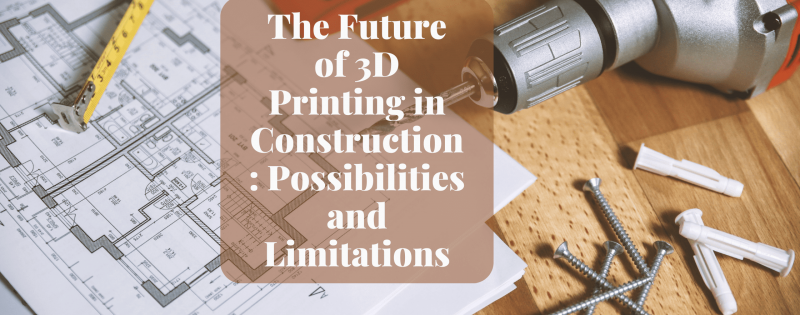
The Future of 3D Printing in Construction: Possibilities and Limitations
October 13, 2023|Posted in: Uncategorized
Do you know 3D printing is all set to revolutionise the construction industry? Nowadays architectural designs are not limited by the bounds of our imagination as 3D printing offers exceptional design freedom, reduces material waste, and reduces construction time to a great extent. Complex architectural forms that would be challenging to achieve with traditional methods are now possible with 3D printing.
Here’s an overview of the Future of 3D Printing in Construction: Possibilities and Limitations from luxurykeralaflats.com, the best portal to buy, sell, or rent flats in Kerala.
In the process of 3D printing, building computer-aided design (CAD) software is used to create a digital blueprint. The printer then deposits material layers like concrete or a composite, in a controlled manner based on the digital blueprint directions & the structure is built layer by layer, following a preset path.
Possibilities:
Speed in Construction
When compared to traditional construction methods, large-scale 3D printers can create entire building components or even entire structures speedily.
Design Freedom
Architects and engineers are able to push the boundaries of design with 3D printing to build innovative and aesthetically pleasing buildings like luxury apartments in Kochi. Intricate, complex shapes and structures can be created easily.
Reduces Material Waste
As 3D printing is an additive process, material can be added layer by layer, reducing waste leading to sustainable construction practices.
Cost Savings
Even though the initial investment in 3D printing equipment can be huge, significant cost savings can be achieved with reduced labour costs, shortened construction timelines, and less material waste.
Customisation
Mass customisation of building components can be done with 3D printing. Each part can be adapted to meet specific requirements be it for residential, commercial, or industrial purposes, increasing functionality and performance.
Remote Construction
3D printing can be operated remotely, reducing the need for on-site labour which can be especially valuable in remote or hazardous locations.
Limitations and Challenges:
Material Limitations
Nowadays only limited construction materials like concrete can be used in 3D printing.
Structural Integrity
Structural integrity of 3D-printed buildings is a major challenge and strict standards and guidelines are required to ensure that 3D-printed structures meet safety requirements.
Scale and Size
Scaling up to larger buildings is difficult with 3D printing as it needs larger and more expensive equipment and logistical challenges as well.
Regulatory Hurdles
The current building codes and regulations may not necessarily accommodate 3D-printed construction methods.
Initial Costs
Huge investment is required in 3D printing equipment which is difficult for smaller construction companies with limited resources.
Skilled Labour
Even though 3D printing minimises the need for manual labour in construction, skilled technicians are needed to operate and maintain the equipment.
Energy Consumption
The energy consumption of 3D printers is high, especially for larger structures.
Quality Control
It is difficult to maintain consistent quality across 3D-printed structures as differences in material properties, printing speed, and environmental conditions can lead to quality control issues.
Contact us at luxurykeralaflats.com to know more on flats in Kerala.
Leave a Reply
*